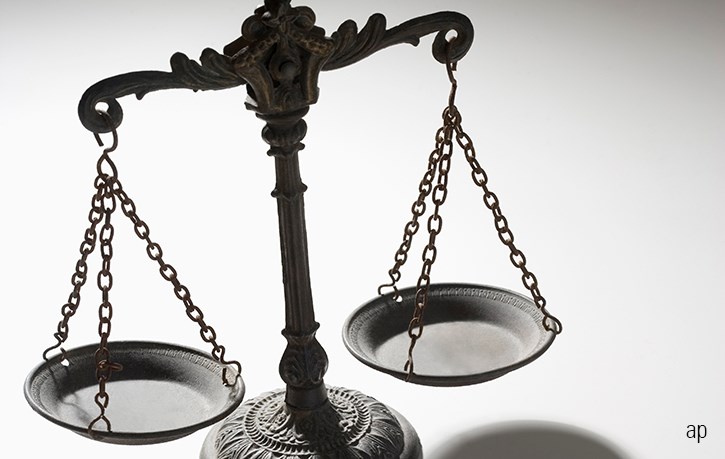
If you didn't any make any panicked trades in the midst of the first-quarter stock market downdraft, give yourself a pat on the back.
Amid the pandemic and related economic worries, stocks experienced some gut-wrenching drops in February and March 2020, testing the fortitude of even the most battle-scarred investing veterans. Stocks went on to enjoy a dramatic recovery in the second quarter, with many nearly erasing their first-quarter losses and rewarding those investors who sat tight through the scary days.
Now that the markets have calmed down, it's a much better time to check up on your portfolio than when everything was topsy-turvy. With a cooler head, you can methodically see if any adjustments are in order. I usually say that conducting such a review once or twice a year—or quarterly, at most—is more than enough for most investors. As you do so, follow these seven steps:
Step 1: See How You're Doing
Before you get mired in the details of your portfolio, start with your plan: are you on track to reach your financial goals?
If you're saving for retirement, check up on whether your current portfolio balance, combined with your savings rate, puts you on track to reach whatever goal you're working toward. Tally your various contributions across all accounts so far in 2020: A decent baseline savings rate is 15%, but higher-income folks will want to aim for 20% more if you're saving for goals other than retirement, such as university funding for children or a house deposit.
If you're retired, the key gauge of the health of your total plan is your withdrawal rate - the amount you plan to take out of your portfolio this year divided by your total portfolio balance at the beginning of the year. Around 4% is often held out as a good starting point, having been stress-tested over a variety of time periods. However, some retirement experts argue that today's low bond yields argue for a lower starting withdrawal rate.
The year 2020 hasn't provided many opportunities to splurge (understatement!), but if you've had a big-spending first half for one reason or another, there's still time to rein it in so that your 2020 withdrawal rate comes in at a comfortable level.
All-in-one retirement calculators can also be useful when assessing the viability of all aspects of your plan. Tools like T. Rowe Price's Retirement Income Calculator and Vanguard's Retirement Nest Egg Calculator bring all of the key variables together and help you identify areas for improvement.
Step 2: Assess your Asset Allocation
Once you've evaluated the health of your overall plan, turn your attention to your actual portfolio. Morningstar's X-Ray view—accessible to Morningstar Premium members - provides a look at your total portfolio's mix of stocks, bonds, and cash. You can compare these actual allocations to your targets and rebalance your portfolio accordingly.
Although the first quarter was rough, stocks regained a lot of ground in the second quarter. That means many investors may find their portfolios are quite heavy on stocks and while for investors who are nearing or in drawdown mode.
From that standpoint, you can view the first-quarter market shock as a wake-up call to make some adjustments. If your portfolio is notably equity-heavy relative to any reasonable measure and you're within 10 years of retirement, shifting more money to bonds and cash is more urgent. You could make the adjustment all in one go or gradually via a regular investing plan.
Step 3: Check Your Cash Reserves
If you've suffered an income reduction amid the pandemic—and many workers have—it's wise to think through your options if you'll need to tap your portfolio for additional funds for living expenses.
A dedicated emergency fund is of course the best option: it's typically recommended that working people hold three to six months' worth of living expenses in liquid reserves, and higher-income workers and contractors/gig economy workers should target an even higher cushion.
For retired people, holding six months' to two years' worth of portfolio withdrawals in cash investments is sensible. This can provide a spending cushion even if stocks head south or bonds take a powder. Retirees whose portfolios are equity-heavy can use rebalancing to top up their liquid reserves.
In addition to checking up on the amount of liquid reserves that you hold, also check up on where you're holding that money. Cash yields have declined to a pittance but it's always worth shopping around for better rates.
Step 4: Assess your Equity Investments
Your broad asset-class exposure will be the key determinant of how your portfolio behaves. But your positioning within each asset class also deserves a closer look. In keeping with a pattern we've seen for several years running, domestic growth stocks and funds have still outperformed value names by a wide margin thus far in 2020.
Check your portfolio's Morningstar Style Box exposure in X-Ray to see if it's tilting disproportionately to growth names. As a benchmark, a total US market index fund holds roughly 25 per cent in each of the large-cap squares, 6 per cent apiece in the mid-cap boxes, and 2 per cent in each of the small-cap boxes. Not every portfolio has to be right on the top of the index, but the style-box view lets you see if you're making any big inadvertent bets.
While you're at it, check up on your sector positioning; X-Ray showcases your own portfolio's sector exposures alongside those of the S&P 500 for benchmarking. Additionally, check your portfolio's allocation to foreign stocks: Not only have they underperformed US stocks for the year to date, but over longer time periods, too.
Step 5: And your Fixed Income Exposure
On the bond side, review your positioning to ensure your fixed income investments will deliver ballast when you need it. Thus far in 2020, the safest bond funds have held up best, whereas riskier bond-fund types are still clawing their way back from big losses in the first quarter.
Of course, yields on high-quality bonds are incredibly low today, but their relative and absolute year-to-date strength demonstrates, yet again, that the most boring, highest-quality bonds will tend to hold up best in market shocks.
If you're adjusting your fixed-income portfolio, redeploying money from higher-risk bond segments into lower-risk alternatives will improve your total portfolio's diversification and risk level, even as it's likely to lower the yield.
Step 6: Check your Holdings
You should also take a closer look at individual holdings. Scanning Morningstar's star ratings for stocks and analyst ratings for funds and exchange-traded funds is a quick way to view a holding's future prospects.
If you're conducting your own due diligence, be alert for red flags. For funds, red flags include manager and strategy changes, persistent underperformance relative to cheap index funds, and dramatically heavy stock or sector bets. For stocks, red flags include high valuations and negative moat trends.
Step 7: Don't Make Changes for the Sake of it
Whether you act on any of the conclusions you drew from your fact-finding in Steps one to six depends will depend on your own situation and how severely out of kilter you feel your portfolio is.
If you're many years from retirement and unruffled by market volatility, repositioning your long-term portfolio probably isn't urgent. But if you do decide to make changes, be sure to take any tax implications or trading costs into account.
Making changes can be more pressing if you're getting close to or in retirement, especially if your portfolio is too aggressively positioned and you don't have enough in safe assets to tide you through sustained weakness in the stock market. In that case, it's wise to think about redeploying some of your enlarged equity portfolio into cash and bonds.
This article originally appeared on Morningstar.com



















